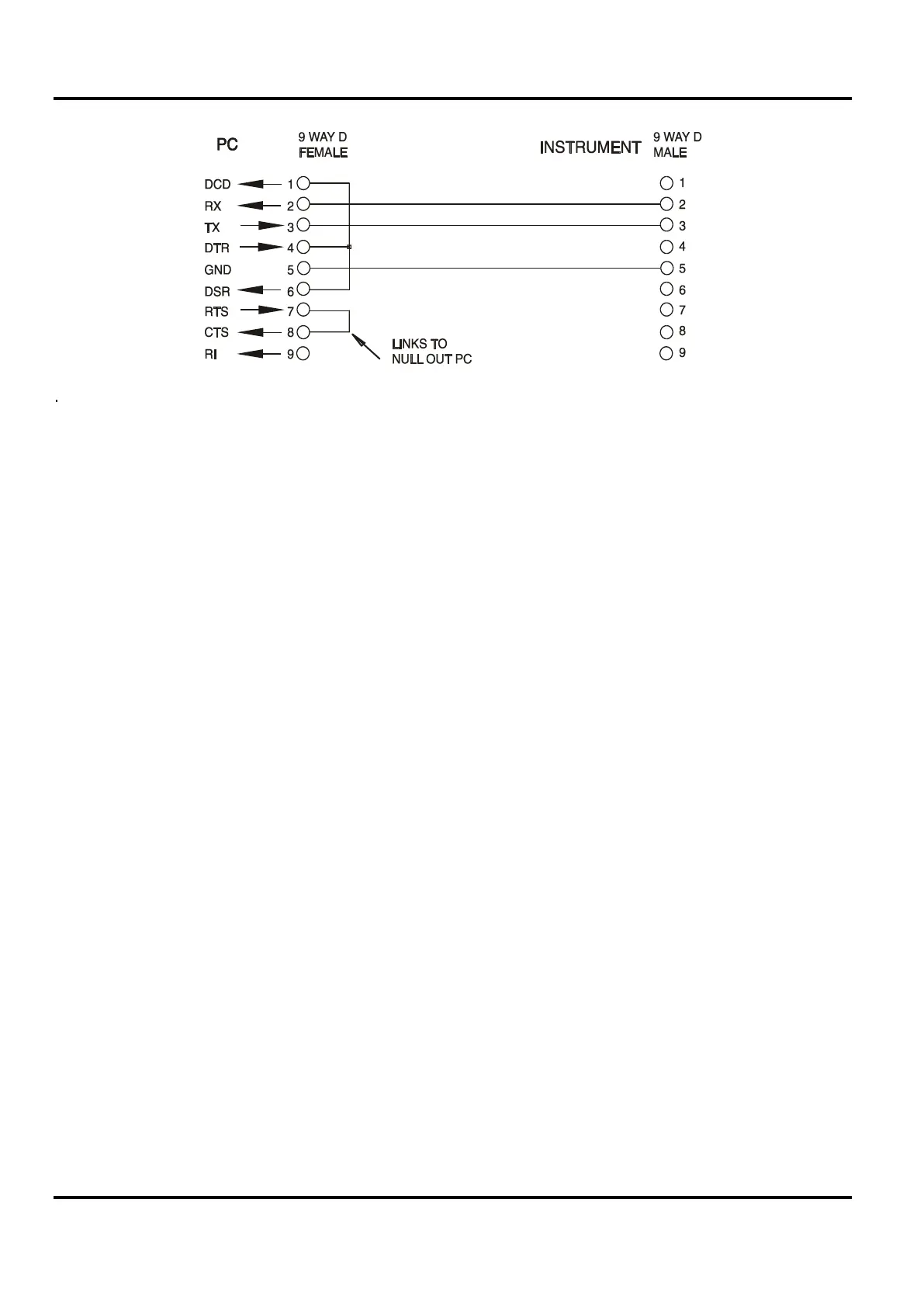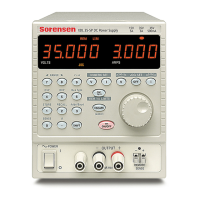20
Baud Rate for this instrument is fixed at 9600; the other parameters are fixed as follows:
RS232 Character Set
Because of the need for XON/XOFF handshake it is possible to send ASCII coded data only;
binary blocks are not allowed. Bit 7 of ASCII codes is ignored, i.e. assumed to be low. No
distinction is made between upper and lower case characters in command mnemonics and they
may be freely mixed. The ASCII codes below 20H (space) are not used. In this manual 20H, etc.
means 20 in hexadecimal. The unit will send XOFF when there are 50 free bytes remaining and
XON when this increases to 100 bytes.
USB Interface
The USB interface is a virtual COM port which can be controlled by a PC as if it was a RS232
device. The instrument is supplied with a CD containing an .inf file for the standard Microsoft
drivers available in Windows 2000, XP, Vista and Windows 7; the installation wizard will install the
driver (32-bit or 64-bit) appropriate to the PC’s operating system. Any updates are available via
the TTi website, www.aimtti.com.
Installation of the interface driver is achieved by connecting the instrument to a PC via a standard
USB cable. The Windows’ plug and play functions should automatically recognize the addition of
new hardware attached to the USB interface and, if this is the first time the connection has been
made, prompt for the location of a suitable driver. Provided that the standard Windows prompts
are followed correctly Windows will install the appropriate driver and establish a virtual COM port
within the PC. The number of the new COM port will depend upon the number of co-existing
COM ports within the PC. The virtual COM port can be driven by Windows applications in exactly
the same way as a standard COM port, except that the Baud rate setting of the virtual COM port
is ignored.
The driver will remain installed on the PC so that the establishment of a virtual COM port is done
automatically each time the instrument is connected to the PC via USB in the future.
Further virtual COM ports are created for each additional instrument connected to the PC via
USB. Each instrument is assigned a separate virtual COM port when it is first connected and the
same COM port will be assigned each time that instrument is subsequently connected; the PC
software makes use of the unique code embedded in each instrument to link it to the same virtual
COM port irrespective of which physical USB port it is connected to.

